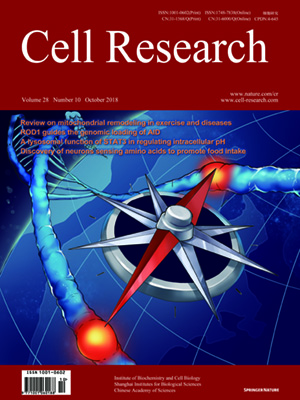
Advanced Search
Submit Manuscript
Advanced Search
Submit Manuscript
Volume 28, No 10, Oct 2018
ISSN: 1001-0602
EISSN: 1748-7838 2018
impact factor 17.848*
(Clarivate Analytics, 2019)
Volume 28 Issue 10, October 2018: 1039-1041 |
Zhongzhong Chen 1,2, Yunping Lei 3,4, Yufang Zheng 1,2,5,Vanessa Aguiar-Pulido 6, M. Elizabeth Ross 6, Rui Peng 1, Li Jin 1,2,Ting Zhang 7, Richard H. Finnell 3,4 and Hongyan Wang 1,2,8,9
1Obstetrics and Gynecology Hospital, State Key Laboratory of Genetic Engineering at School of Life Sciences, Institute of Reproduction and Development, Fudan University, Shanghai 200011, China; 2Key Laboratory of Reproduction Regulation of NPFPC, Collaborative Innovation Center of Genetics and Development, Fudan University, Shanghai 200032, China; 3Departments of Molecular and Cellular Biology and Medicine, Baylor College of Medicine, Houston, TX 77030, USA; 4Collaborative Innovation Center for Genetics & Development, School of Life Sciences, Fudan University, Shanghai 200438, China; 5Institute of Developmental Biology & Molecular Medicine, Fudan University, Shanghai 200433, China; 6Center for Neurogenetics, Weill Cornell Medicine, New York, NY 10021, USA; 7Capital Institute of Pediatrics, Beijing 100020, China; 8Children’s Hospital, Fudan University, 399 Wanyuan Road, Shanghai 201102, China and 9Institutes of Biomedical Sciences, Fudan University, Shanghai 200032, China
https://doi.org/10.1038/s41422-018-0061-3